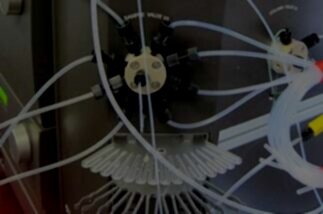
AKTA Pilot 600 Service & Repair
You rely on your equipment. Your equipment should rely on ATG.
Analytical Technologies Group specializes in the maintenance and repair of the AKTA™ Pilot 600 and other AKTA™ chromatography systems. We focus on servicing only a narrow range of product lines, allowing our service engineers to maintain unparalleled knowledge of the AKTA™ and other lines we service. We have parts in stock to be ready whenever a problem arises and keep any downtime you experience to a minimum. Our service contracts provide preventative maintenance to ensure your AKTA™ Pilot 600 will have a long, productive life.
Tips for keeping your AKTA™ Pilot 600 in good working order:
The pH monitor should be calibrated daily before use.
Change the pump rinsing solution weekly. Only use 20% ethanol in deionized water as pump rinsing solution.
Reset the pressure sensors at least once a week.
The pH electrode should be replaced every six months.
Valve membranes should be replaced annually.
Replace tubing and connectors at the first sign of leaks or wear. These are inexpensive components and it is not worth risking flow path problems because of them.
Always keep the instrument and area around it clean of dust and keep the instrument free of chemical stains. It is much easier to keep the outside area clean than it is to troubleshoot and clean components when a failure occurs.
Do not leave buffer sitting in the instrument. Flush it with distilled water after use or, if the instrument will be idle longer than overnight, flush it with 20% ethanol.
Periodically run a system leakage test to check for leaks, followed by a backpressure test to ensure the correct back pressure is being generated.
Having technical problems with your AKTA™ Pilot 600?
Fast Response
We provide very prompt responses to customers within one business day.
Fast Turnaround
Our field service engineers are expediently dispatched across North America & Europe to fulfill your service request.
Expert Staff
ATG’s highly trained, highly skilled staff ensure your instruments remain in optimal condition.
Parts In Stock
To minimize instrument downtime, we stock virtually all parts for the systems in which we specialize.
AKTA™ Pilot 600 Troubleshooting Tips:
Most common measurement problems, such as baseline drift, ghost peaks, or general noise, are caused by the system being dirty or having air in it. A good first step to eliminate these causes is to clean the system and purge the lines. Degas all buffers before use. Centrifuge and / or filter your samples before loading.
If you are experiencing an unstable or incorrect conductivity signal, calibrate the monitor, preferably using a 1.0 M KCl certified conductivity standard solution.
If a system leakage test fails, inspect all tubing connections and valves in the flow path and replace any which show leaks. If a value leaks, replace the valve membrane, and only if the problem persists should you need to replace the entire valve module.
If a system backpressure test fails, you may have a blockage or obstruction in the flow path. Move the outlet tubing to the outlet port of each successive module, starting with the outlet valve and working to the beginning of the flow path. When the blocked module is excluded from the flow path, the back pressure will drop. Clean or replace the blocked module as needed. Note that the issue could be as simple as kinked or twisted tubing.
When in doubt, run a system test. The system’s self-diagnostics can identify many issues on its own.
If the UV response test fails, clean the UV flow cell. Power off and restart the instrument to allow it to auto-calibrate.
If the gradient test or step response test fail, the tubing to and from Pump A and Pump B could be obstructed. Ensure it is not, purge any potential air from the pump, then restart the instrument.
Any sensor malfunction may be able to be corrected by cleaning the appropriate flow cell.

